Week 9: Advanced Low Elevation
Scroll down to study the birds by sight and sound, and then take the quiz.
Week 9 Birds
Canada Goose, American Avocet, Black-chinned Hummingbird, Blue Grosbeak, Mallard, Willow Flycatcher



canada goose
Bird Code: CANG
Identify this bird by
Big waterbirds with a long neck, large body, wide flat bill
Large webbed feet
Tell it apart by…
Black head with white cheeks and chinstrap
Black neck, tan breast, and brown back
In flight, you can see a prominent white “U” on the upper part of their tail
Look for…
Behavior - feed by dabbling in the water or grazing in fields and large lawns. They are often seen in flight moving in pairs or flocks; flocks often assume a V formation
Listen for…
Call: Various loud honks, barks, and cackles. Also some hisses
Resources:
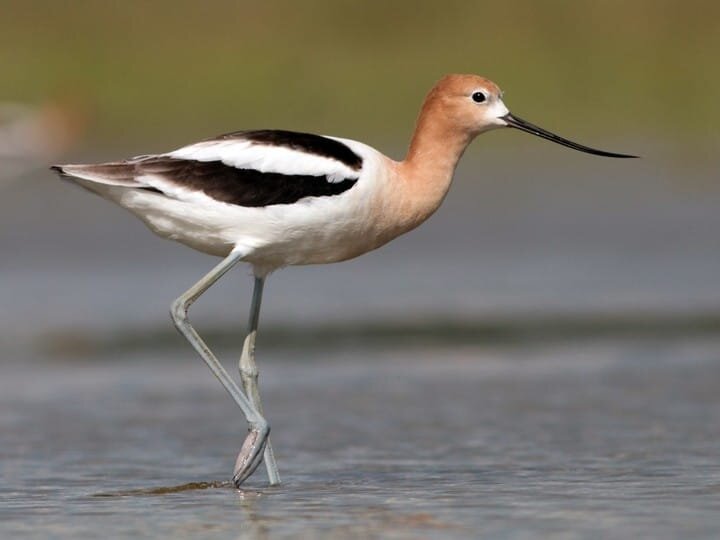

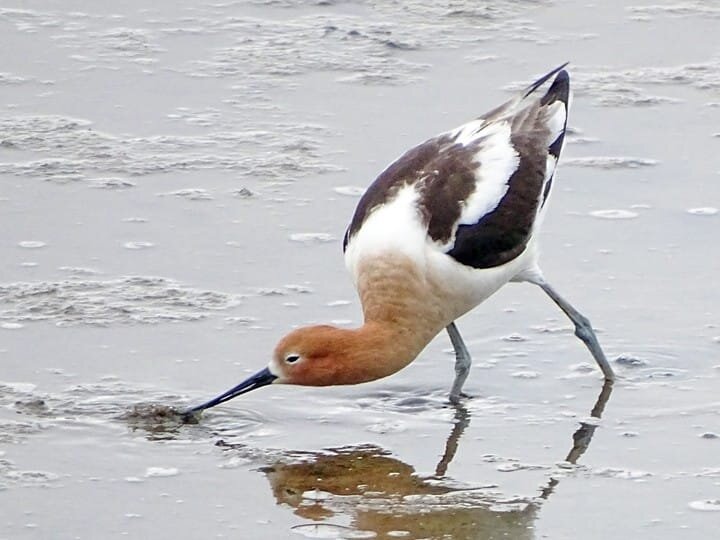

American Avocet
Bird Code: AMAV
Identify this bird by
Large, slender shorebird with a long, upturned bill, a long neck, and a round head
Its oval body sits atop long legs
Tell it apart by…
Rusty head and neck that turns grayish white after breeding
A black patch on the back and black-and-white wings mark its largely white body
The legs are bluish gray
Look for…
Behavior - Wades through shallow water sweeping its bill side to side for aquatic invertebrates. Often shakes its foot with each step to remove mud from its foot
Listen for…
Call: Generally silent, but a repeated, high-pitched kleet
Resources:





black-chinned hummingbird
Bird Code: BCHU
Identify this bird by
Small, fairly slender hummingbird with a fairly straight black bill
Dull metallic green above and dull grayish-white below
In both males and females, the flanks are glossed with dull metallic green
Tell males and females apart by…
Males: Have a velvety black throat with a thin, iridescent purple base
Females: Have a pale throat. Their three outer tail feathers have broad white tips
Look for…
Behavior - Hovers at flowers and feeders, darts erratically to take tiny swarming insects, perches atop high snags to survey its territory, watching for competitors to chase off and for flying insects to eat
Listen for…
Call: Soft, flat “chew” notes, often in series with soft high squeals, chips, and ticks. Their wings also give a low-pitched humming sound
Resources:
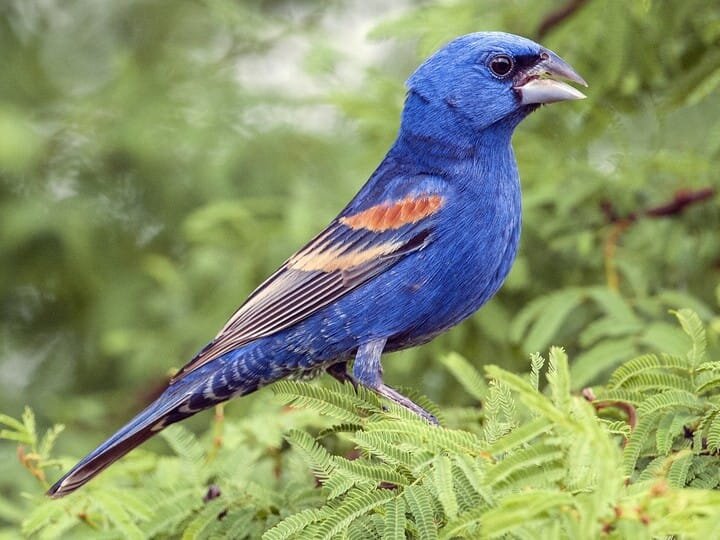
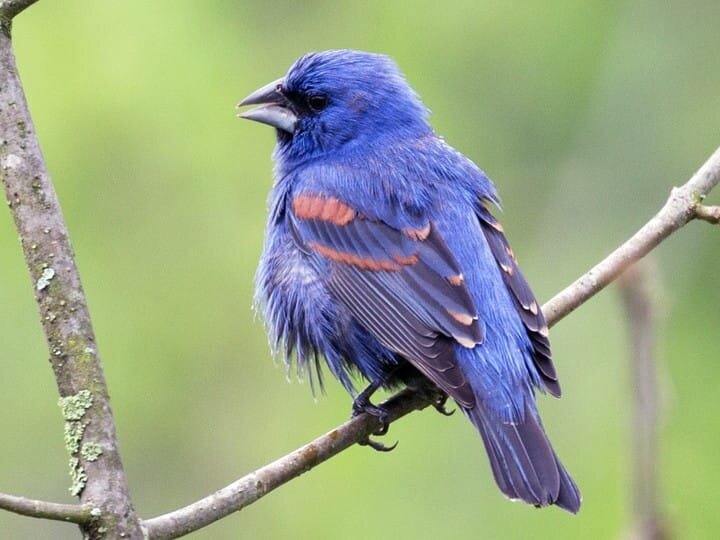
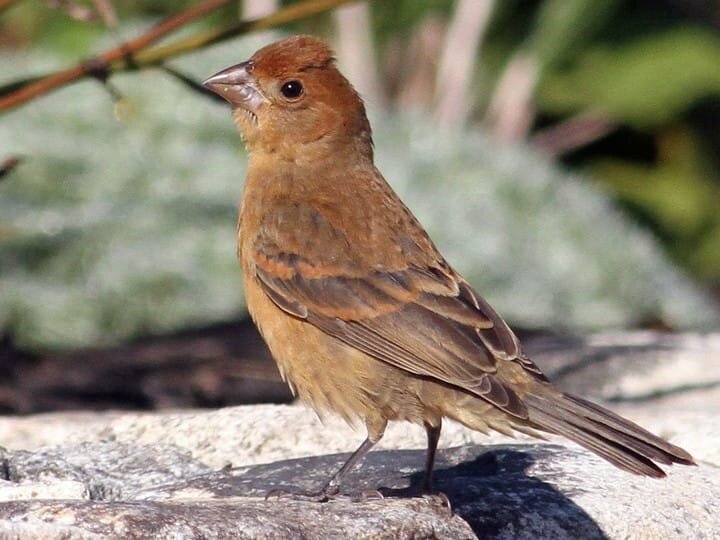


blue grosbeak
Bird Code: BLGR
Identify this bird by
Stocky songbird
Very large, triangular bill that seems to cover the entire front of its face, from throat to forehead
Both sexes have two wingbars; the upper is chestnut and the lower is grayish to buffy
Tell males and females apart by…
Adult males are deep, rich blue with a tiny black mask in front of the eyes, chestnut wingbars, and a black-and-silver beak
Females/juveniles are primarily rich cinnamon-brown. The color is richer on the head, paler on the underparts; their tails are bluish
Look for…
Behavior - unobtrusive despite their bright colors, although in summer males frequently sing their pleasant, rich, warbling songs
Listen for…
Song: a rich, musical warble continuously for 2 or 3 seconds.
Call: A metallic chink
Resources:




mallard
Bird Code: MALL
Identify this bird by
Large ducks with hefty bodies, rounded heads, and wide, flat bills
Like many “dabbling ducks” the body is long and the tail rides high out of the water, giving a blunt shape
Both sexes have a white-bordered, blue “speculum” patch in the wing
Tell males and females apart by…
Males: Have a dark, iridescent-green head and bright yellow bill. The gray body is sandwiched between a brown breast and black rear
Females & Juveniles: Mottled brown with orange-and-brown bills. Both sexes have a white-bordered, blue “speculum” patch in the wing
Look for…
Behavior - Mallards are “dabbling ducks”—they feed in the water by tipping forward and grazing on underwater plants
Listen for…
Call: The female Mallard gives the quintessential duck quack: often as a series of 2-10 quacks that begin loudly and get softer. The male mallard gives a quieter, rasping one-or two-noted call.
Resources:





willow flycatcher
Bird Code: WIFL
Identify this bird by
Fairly long, thin tail and wings. The bill is broad
Like other flycatchers, they tend to perch upright
Males and females look alike
Tell it apart by…
Brownish olive overall with a slight yellow wash to the belly
2 whitish wingbars and a white throat that contrasts with the brownish olive breast
The white eyering seen on most flycatchers is very thin and nearly absent on Willow Flycatchers
Look for…
Behavior - Flit between willows and other shrubs in the understory while calling. They stick close to willows perching on the edge or up on top of the shrub. From these perches they fly out to catch insects or sing
Listen for…
Song: Songs are often the key to their identity and this one sings a hoarse fitz-bew from high perches in their territory
Call: A soft, dry whit
Resources:
Feeling ready? Take the quiz!
